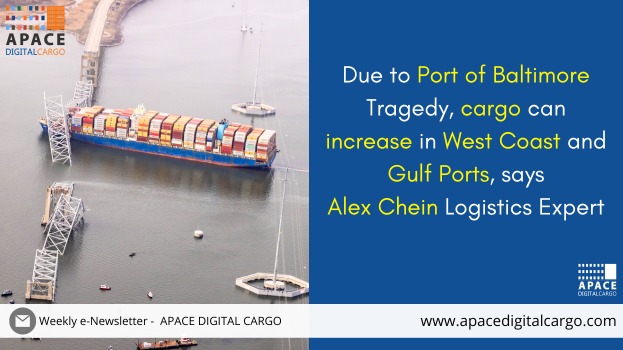
The recent tragedy at the Port of Baltimore has sent shockwaves through the shipping industry, prompting a critical need for alternative gateways as the facility faces an impending closure. EKA Partner and former Port of Long Beach Managing Director for Trade, Alex Cherin, has offered insightful guidance to stakeholders within the supply chain, shedding light on the potential ramifications of the bridge collapse at the Port of Baltimore.
While immediate cargo diversion from the US East Coast may not be imminent, Cherin cautions that increased volumes are expected to flow towards the West Coast and Gulf Ports over the next six months to one year. This shift underscores the pressing importance of gateway stability in today’s rapidly evolving shipping landscape.
“The closure of the Port of Baltimore for any substantial duration will undoubtedly compel importers to explore alternative ports of entry, particularly those equipped with infrastructure and assets not readily available along the East Coast. The deep water, rail connectivity, and warehousing capabilities of West Coast and Gulf Ports, traditionally overlooked by shippers accustomed to Baltimore, are poised to emerge as attractive alternatives as capacity constraints plague other East Coast ports or hinder handling specialised cargo such as automobiles,” said Cherin.
“Key factors such as fuel prices, rail availability, and trucking costs will weigh heavily on the decision-making process as industry players navigate this pivotal juncture. The shifting dynamics in the wake of the Port of Baltimore tragedy are a stark reminder of the resilience and adaptability inherent in the global shipping network,” added Cherin.
Alex Chein can be reached at (562) 480-7334 or [email protected]




